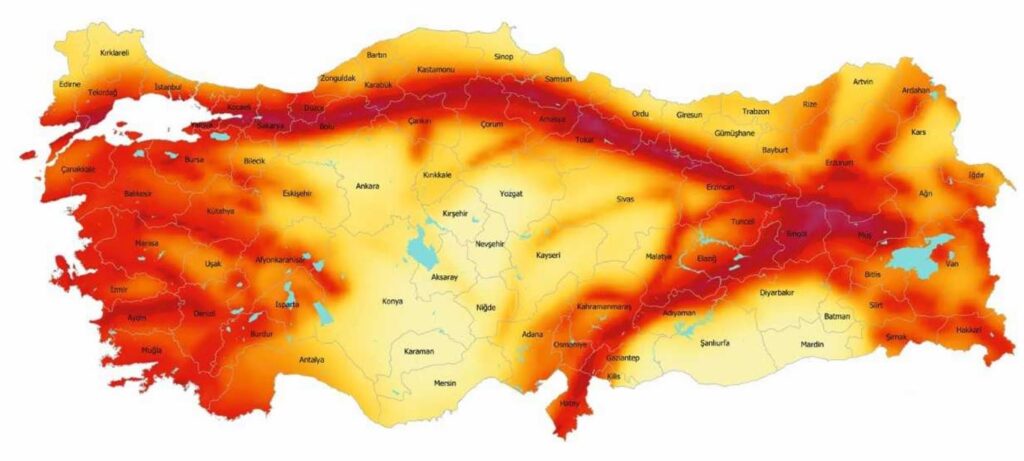
Turkey lies on a small tectonic plate that is called the Anatolian plate, and the country is located in an area with relatively high seismic activity.
The reason for this is that the country is squeezed between three large tectonic plates: The north-going African and Arabian plate to the south, and the south-going Eurasian plate to the north. The movement of these three plates causes the Anatolian plate to be pushed westward into the Aegean Sea.
Since Turkey is a large country, the risk from region to region is different. According to the determination of the Disaster and Emergency Management Presidency (AFAD), regions in Turkey are divided into 5 zones according to earthquake risk.
If a region is placed in the 1st, 2nd or 3rd zone precautions must be taken.
Alanya is located in the 4th zone and is therefor considered a safe zone. This means that in Alanya earthquakes are felt, but will not have any destructive effect.
Building Process in Turkey
To make earthquake-proof buildings, the builder has to be aware of the building’s natural vibrations.
Earthquakes create strong lateral movements, so to minimize the amount of damage, buildings are constructed using rigid horizontal floors and vertical columns which will absorb the lateral load and lead it to the ground.
Despite Alanya’s location in an area with relatively low seismic activity, it is still mandatory to acquire DASK insurance, which also covers any damage caused by earthquakes.
In Turkey there are clear rules for how to obtain building permissions and then carry out the construction based on the permission that is given.
During the building process, controls of the quality of the raw construction and compliance with the building permission are done by verified and independent controllers.
Only after these controls have been passed will the constructor be able to obtain the final permissions and documentation of completion.
Where can I learn if the building is earthquake resistant?
Earthquake resistance tests are carried out by independent and licensed research companies or municipal teams and are used for old buildings in high risk zones.
In regions where there is no high earthquake risk, earthquake resistance tests can be made by independent companies for a fee.
In general, there is no need to test newer buildings in any of the 5 zones since they have been tested and approved during the construction period.







